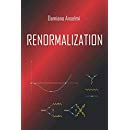Renormalization of general gauge theories
Quantum gravity is extended to include purely virtual “cloud sectors”, which allow us to define a complete set of point-dependent observables, including a gauge invariant metric and gauge invariant matter fields, and calculate their off-shell correlation functions perturbatively. The ordinary on-shell correlation functions and the $S$ matrix elements are unaffected. Each extra sector is made of a cloud field, its anticommuting partner, a “cloud-fixing” function and a cloud Faddeev-Popov determinant. The additional fields are purely virtual, to ensure that no ghosts propagate. The extension is unitary. In particular, the off-shell, diagrammatic version of the optical theorem holds. The one-loop two-point functions of dressed scalars, vectors and gravitons are calculated. Their absorptive parts are positive, cloud independent and gauge independent, while they are unphysical if non purely virtual clouds are used. We illustrate the differences between our approach to the problem of finding a complete set of observables in quantum gravity and other approaches available in the literature.
Eur. Phys. J. C 83 (2023) 1066 | DOI: 10.1140/epjc/s10052-023-12220-4
We extend quantum field theory by including purely virtual “cloud” sectors, to define physical off-shell correlation functions of gauge invariant quark and gluon fields, without affecting the $S$ matrix amplitudes. The extension is made of certain cloud bosons, plus their anticommuting partners. Both are quantized as purely virtual, to ensure that they do not propagate ghosts. The extended theory is renormalizable and unitary. In particular, the off-shell, diagrammatic version of the optical theorem holds. We calculate the one-loop two-point functions of dressed quarks and gluons, and show that their absorptive parts are gauge independent, cloud independent and positive (while they are generically unphysical if the cloud sectors are not purely virtual). A gauge/cloud duality simplifies the computations and shows that the gauge choice is just a particular cloud. It is possible to dress every field insertion with a different cloud. We compare the purely virtual extension to previous approaches to similar problems.
Eur. Phys. J. C 83 (2023) 544 | DOI: 10.1140/epjc/s10052-023-11717-2
A theory of quantum gravity has been recently proposed by means of a novel quantization prescription, which is able to turn the poles of the free propagators that are due to the higher derivatives into fakeons. The classical Lagrangian contains the cosmological term, the Hilbert term, $
\sqrt{-g}R_{\mu \nu }R^{\mu \nu }$ and $\sqrt{-g}R^{2}$. In this paper, we compute the one-loop renormalization of the theory and the absorptive part of the graviton self energy. The results illustrate the mechanism that makes renormalizability compatible with unitarity. The fakeons disentangle the real part of the self energy from the imaginary part. The former obeys a renormalizable power counting, while the latter obeys the nonrenormalizable power counting of the low energy expansion and is consistent with unitarity in the limit of vanishing cosmological constant. The value of the absorptive part is related to the central charge $c$ of the matter fields coupled to gravity.
J. High Energ. Phys. 05 (2018) 27 | DOI: 10.1007/JHEP05(2018)027
The “fakeon” is a fake degree of freedom, i.e. a degree of freedom that does not belong to the physical spectrum, but propagates inside the Feynman diagrams. Fakeons can be used to make higher-derivative theories unitary. Moreover, they help us clarify how the Lee-Wick models work. In this paper we study the fakeon models, that is to say the theories that contain fake and physical degrees of freedom. We formulate them by (nonanalytically) Wick rotating their Euclidean versions. We investigate the properties of arbitrary Feynman diagrams and, among other things, prove that the fakeon models are perturbatively unitary to all orders. If standard power counting constraints are fulfilled, the models are also renormalizable. The S matrix is regionwise analytic. The amplitudes can be continued from the Euclidean region to the other regions by means of an unambiguous, but nonanalytic, operation, called average continuation. We compute the average continuation of typical amplitudes in four, three and two dimensions and show that its predictions agree with those of the nonanalytic Wick rotation. By reconciling renormalizability and unitarity in higher-derivative theories, the fakeon models are good candidates to explain quantum gravity.
J. High Energy Phys. 02 (2018) 141 | DOI: 10.1007/JHEP02(2018)141
We study the main options for a unitary and renormalizable, local quantum field theory of the gravitational interactions. The first model is a Lee-Wick superrenormalizable higher-derivative gravity, formulated as a nonanalytically Wick rotated Euclidean theory. We show that, under certain conditions, the $S$ matrix is unitary when the cosmological constant vanishes. The model is the simplest of its class. However, infinitely many similar options are allowed, which raises the issue of uniqueness. To deal with this problem, we propose a new quantization prescription, by doubling the unphysical poles of the higher-derivative propagators and turning them into Lee-Wick poles. The Lagrangian of the simplest theory of quantum gravity based on this idea is the linear combination of $R$, $R_{\mu \nu}R^{\mu \nu }$, $R^{2}$ and the cosmological term. Only the graviton propagates in the cutting equations and, when the cosmological constant vanishes, the $S$ matrix is unitary. The theory satisfies the locality of counterterms and is renormalizable by power counting. It is unique in the sense that it is the only one with a dimensionless gauge coupling.
J. High Energy Phys. 06 (2017) 086 | DOI: 10.1007/JHEP06(2017)086
We show that Minkowski higher-derivative quantum field theories are generically inconsistent, because they generate nonlocal, non-Hermitian ultraviolet divergences, which cannot be removed by means of standard renormalization procedures. By “Minkowski theories” we mean theories that are defined directly in Minkowski spacetime. The problems occur when the propagators have complex poles, so that the correlation functions cannot be obtained as the analytic continuations of their Euclidean versions. The usual power counting rules fail and are replaced by much weaker ones. Self-energies generate complex divergences proportional to inverse powers of D’Alembertians. Three-point functions give more involved nonlocal divergences, which couple to infrared effects. The violations of the locality and Hermiticity of counterterms are illustrated by means of explicit computations in scalar models and higher-derivative gravity.
Eur. Phys. J. C 77 (2017) 84 | DOI: 10.1140/epjc/s10052-017-4646-7
We reconsider perturbative unitarity in quantum field theory and upgrade several arguments and results. The minimum assumptions that lead to the largest time equation, the cutting equations and the unitarity equation are identified. Using this knowledge and a special gauge, we give a new, simpler proof of perturbative unitarity in gauge theories and generalize it to quantum gravity, in four and higher dimensions. The special gauge interpolates between the Feynman gauge and the Coulomb gauge without double poles. When the Coulomb limit is approached, the unphysical particles drop out of the cuts and the cutting equations are consistently projected onto the physical subspace. The proof does not extend to nonlocal quantum field theories of gauge fields and gravity, whose unitarity remains uncertain.
Phys. Rev. D 94 (2016) 025028 | DOI: 10.1103/PhysRevD.94.025028

 Quantum Gravity
Quantum Gravity 


